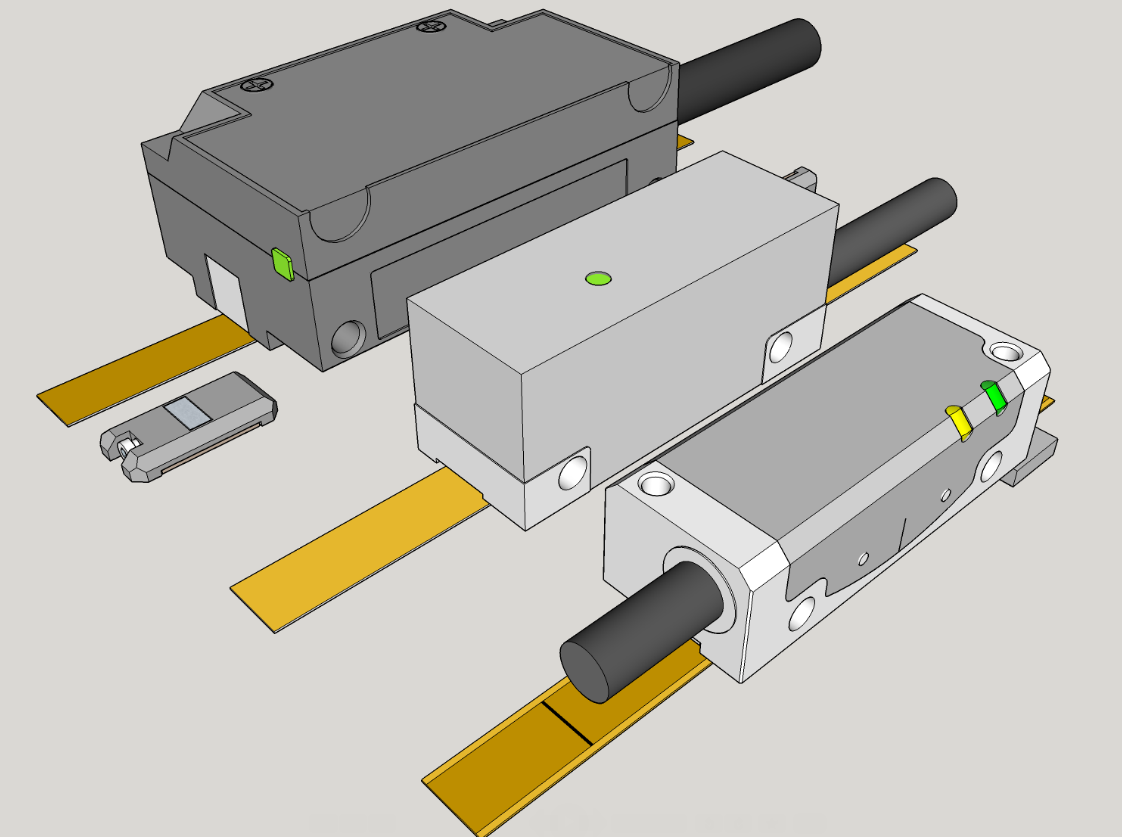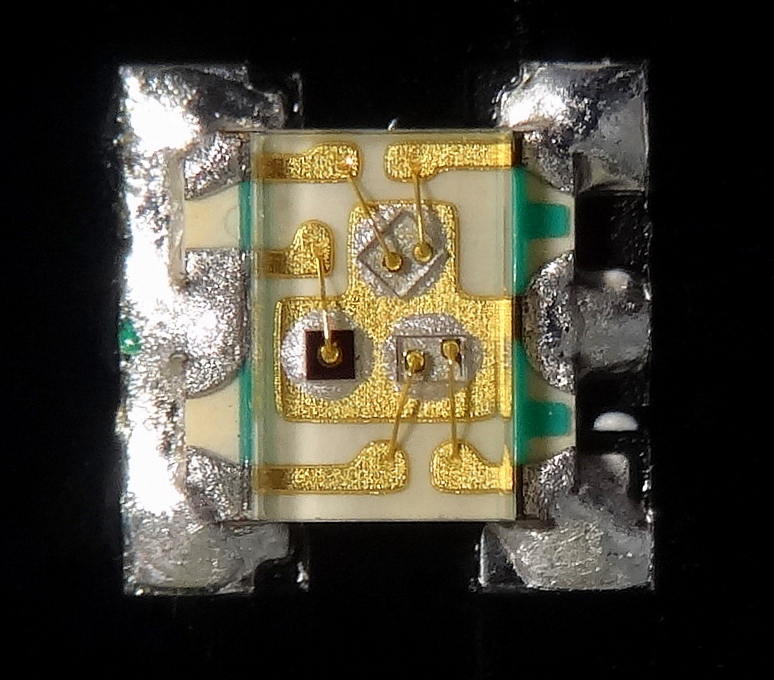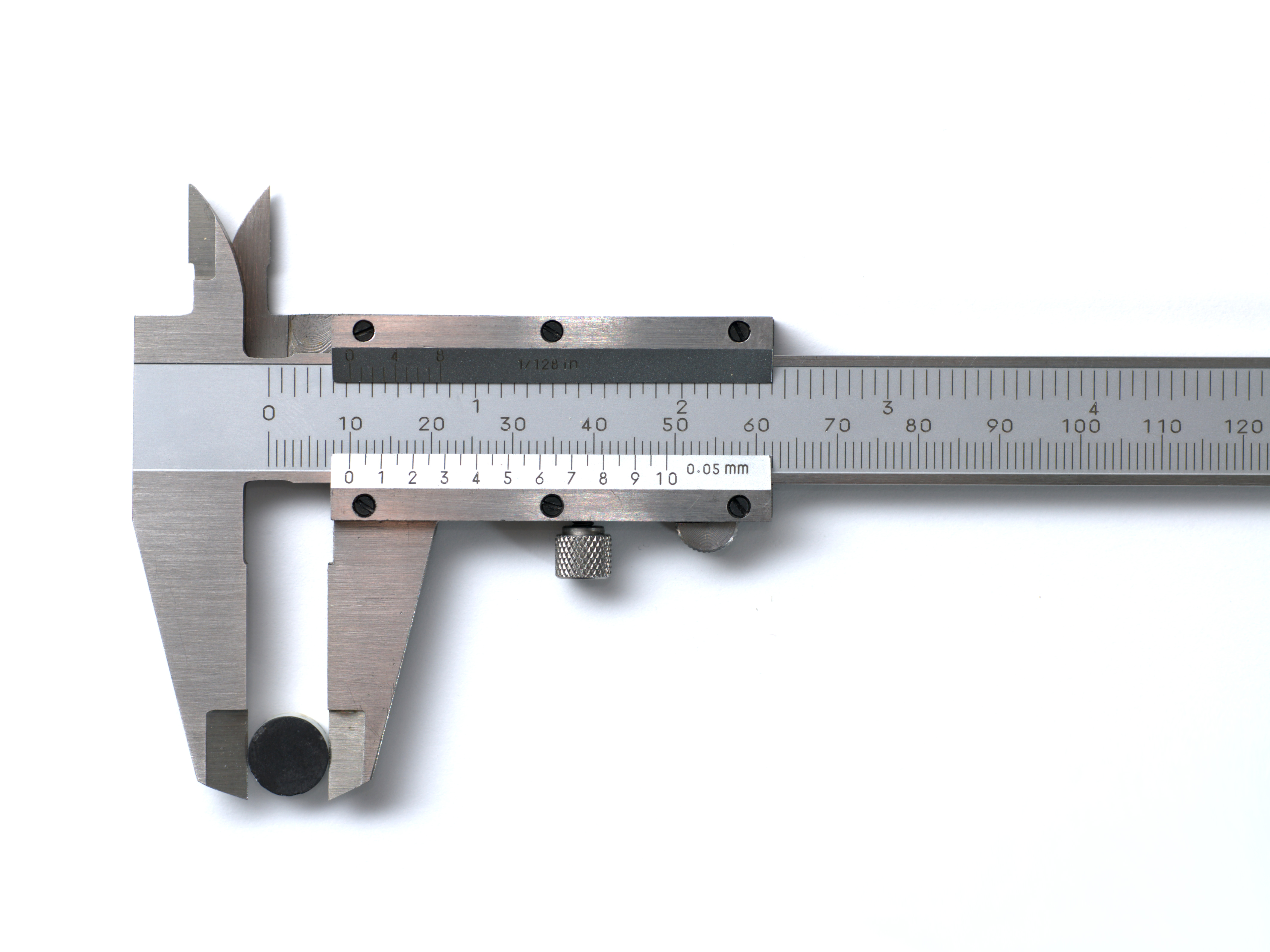|
Linear Encoder
A linear encoder is a sensor, transducer or readhead paired with a scale that encodes position. The sensor reads the scale in order to convert the encoded position into an analog or digital signal, which can then be decoded into position by a digital readout (DRO) or motion controller. The encoder can be either ''incremental'' or ''absolute.'' In an incremental system, position is determined by motion over time; in contrast, in an absolute system, motion is determined by position over time. Linear encoder technologies include optical, magnetic, inductive, capacitive and eddy current. Optical technologies include shadow, self imaging and interferometric. Linear encoders are used in metrology instruments, motion systems, inkjet printers and high precision machining tools ranging from digital calipers and coordinate measuring machines to stages, CNC mills, manufacturing gantry tables and semiconductor steppers. Physical principle Linear encoders are transducers that exploit many d ... [...More Info...] [...Related Items...] OR: [Wikipedia] [Google] [Baidu] |
Optical Encoder Trio
Optics is the branch of physics that studies the behaviour and properties of light, including its interactions with matter and the construction of instruments that use or detect it. Optics usually describes the behaviour of visible, ultraviolet, and infrared light. Because light is an electromagnetic wave, other forms of electromagnetic radiation such as X-rays, microwaves, and radio waves exhibit similar properties. Most optical phenomena can be accounted for by using the classical electromagnetic description of light. Complete electromagnetic descriptions of light are, however, often difficult to apply in practice. Practical optics is usually done using simplified models. The most common of these, geometric optics, treats light as a collection of rays that travel in straight lines and bend when they pass through or reflect from surfaces. Physical optics is a more comprehensive model of light, which includes wave effects such as diffraction and interference that cannot be ... [...More Info...] [...Related Items...] OR: [Wikipedia] [Google] [Baidu] |
Hall Effect
The Hall effect is the production of a voltage difference (the Hall voltage) across an electrical conductor that is transverse to an electric current in the conductor and to an applied magnetic field perpendicular to the current. It was discovered by Edwin Hall in 1879. A Hall effect can also occur across a void or hole in a semiconductor or metal plate, when current is injected via contacts that lie on the boundary or edge of the void or hole, and the charge flows outside the void or hole, in the metal or semiconductor. This Hall effect becomes observable in a perpendicular applied magnetic field across voltage contacts that lie on the boundary of the void on either side of a line connecting the current contacts. It exhibits apparent sign reversal in comparison to the standard "ordinary Hall effect" in the simply connected specimen, and depends only on the current injected from within the void. Superposition may also be realized in the Hall effect: first imagine the stand ... [...More Info...] [...Related Items...] OR: [Wikipedia] [Google] [Baidu] |
Differential Signaling
Differential signalling is a method for electrically transmitting information using two complementary signals. The technique sends the same electrical signal as a differential pair of signals, each in its own conductor. The pair of conductors can be wires in a twisted-pair or ribbon cable or traces on a printed circuit board. Electrically, the two conductors carry voltage signals which are equal in magnitude, but of opposite polarity. The receiving circuit responds to the difference between the two signals, which results in a signal with a magnitude twice as large. The symmetrical signals of differential signalling may be referred to as ''balanced'', but this term is more appropriately applied to balanced circuits and balanced lines which reject common-mode interference when fed into a differential receiver. Differential signalling does not make a line balanced, nor does noise rejection in balanced circuits require differential signalling. Differential signalling ... [...More Info...] [...Related Items...] OR: [Wikipedia] [Google] [Baidu] |
Circular Lissajous
Circular may refer to: * The shape of a circle * ''Circular'' (album), a 2006 album by Spanish singer Vega * Circular letter (other) ** Flyer (pamphlet), a form of advertisement * Circular reasoning, a type of logical fallacy * Circular reference * Government circular, a written statement of government policy See also * Circular DNA (other) * Circular Line (other) Circle Line or circular line is an expression commonly used to describe a circle route in a public transport network or system. Circle Line or Circular line may also refer to: Railways Asia Bangladesh * Chittagong Circular Railway China ... * Circularity (other) {{disambiguation ... [...More Info...] [...Related Items...] OR: [Wikipedia] [Google] [Baidu] |
Digital Press
Digital printing is a method of printing from a digital-based image directly to a variety of media. It usually refers to professional printing where small-run jobs from desktop publishing and other digital sources are printed using large-format and/or high-volume laser or inkjet printers. Digital printing has a higher cost per page than more traditional offset printing methods, but this price is usually offset by avoiding the cost of all the technical steps required to make printing plates. It also allows for on-demand printing, short turnaround time, and even a modification of the image (variable data) used for each impression. The savings in labor and the ever-increasing capability of digital presses means that digital printing is reaching the point where it can match or supersede offset printing technology's ability to produce larger print runs of several thousand sheets at a low price. Process The greatest difference between digital printing and analog methods, such as l ... [...More Info...] [...Related Items...] OR: [Wikipedia] [Google] [Baidu] |
Wire Bonder
Wire bonding is the method of making interconnections between an integrated circuit (IC) or other semiconductor device and its packaging during semiconductor device fabrication. Although less common, wire bonding can be used to connect an IC to other electronics or to connect from one printed circuit board (PCB) to another. Wire bonding is generally considered the most cost-effective and flexible interconnect technology and is used to assemble the vast majority of semiconductor packages. Wire bonding can be used at frequencies above 100 GHz. [...More Info...] [...Related Items...] OR: [Wikipedia] [Google] [Baidu] |
SMT Placement Equipment
Surface-mount technology (SMT) component placement systems, commonly called pick-and-place machines or P&Ps, are robotic machines which are used to place surface-mount devices (SMDs) onto a printed circuit board (PCB). They are used for high speed, high precision placing of a broad range of electronic components, like capacitors, resistors, integrated circuits onto the PCBs which are in turn used in computers, consumer electronics as well as industrial, medical, automotive, military and telecommunications equipment. Similar equipment exists for through-hole components. This type of equipment is sometimes also used to package microchips using the flip chip method. History 1980s and 1990s During this time, a typical SMT assembly line employed two different types of pick-and-place (P&P) machines arranged in sequence. The unpopulated board was fed into a rapid placement machine. These machines, sometimes called chip shooters, place mainly low-precision, simple package compon ... [...More Info...] [...Related Items...] OR: [Wikipedia] [Google] [Baidu] |
Machine Tool
A machine tool is a machine for handling or machining metal or other rigid materials, usually by cutting, boring, grinding, shearing, or other forms of deformations. Machine tools employ some sort of tool that does the cutting or shaping. All machine tools have some means of constraining the work piece and provide a guided movement of the parts of the machine. Thus, the relative movement between the workpiece and the cutting tool (which is called the toolpath) is controlled or constrained by the machine to at least some extent, rather than being entirely "offhand" or " freehand". It is a power-driven metal cutting machine which assists in managing the needed relative motion between cutting tool and the job that changes the size and shape of the job material. The precise definition of the term ''machine tool'' varies among users, as discussed below. While all machine tools are "machines that help people to make things", not all factory machines are machine tools. Today machi ... [...More Info...] [...Related Items...] OR: [Wikipedia] [Google] [Baidu] |
Robotics
Robotics is an interdisciplinary branch of computer science and engineering. Robotics involves design, construction, operation, and use of robots. The goal of robotics is to design machines that can help and assist humans. Robotics integrates fields of mechanical engineering, electrical engineering, information engineering, mechatronics, electronics, bioengineering, computer engineering, control engineering, software engineering, mathematics, etc. Robotics develops machines that can substitute for humans and replicate human actions. Robots can be used in many situations for many purposes, but today many are used in dangerous environments (including inspection of radioactive materials, bomb detection and deactivation), manufacturing processes, or where humans cannot survive (e.g. in space, underwater, in high heat, and clean up and containment of hazardous materials and radiation). Robots can take any form, but some are made to resemble humans in appearance. This is claimed t ... [...More Info...] [...Related Items...] OR: [Wikipedia] [Google] [Baidu] |
Digital Read Out
A digital readout (DRO) is a numeric display, usually with an integrated keyboard and some means of numeric representation. Its integral computer reads signals generated by linear encoders or (less frequently) rotary encoders installed to track machine axes, using these measures to keep track of and display to a machine operator the workpiece position (e.g., milling machines), or tool position (lathes, grinders, etc) in space. In machine-shop terminology, the complete Digital Read Out system (consisting of a computer, axis-position encoders, and a numeric display) is referred to by the acronym DRO. Such a system is commonly fitted to machines in today's shops, especially for metal working — lathes, cylindrical grinders, milling machines, surface grinders, boring mills and other machine tools — to allow the operator to work faster and with greater accuracy. Use of DROs is not limited to manually operated machines. CNC machines can usually be switched to manual operation, an ... [...More Info...] [...Related Items...] OR: [Wikipedia] [Google] [Baidu] |
Digital Caliper
A caliper (British spelling also calliper, or in plurale tantum sense a pair of calipers) is a device used to measure the dimensions of an object. Many types of calipers permit reading out a measurement on a ruled scale, a dial, or a digital display. Some calipers can be as simple as a compass with inward or outward-facing points, but no scale. The tips of the caliper are adjusted to fit across the points to be measured and the dimension read by measuring between the tips with another measuring tool, such as a ruler. It is used in many fields such as mechanical engineering, metalworking, forestry, woodworking, science and medicine. Plural vs. singular A single tool might be referred to as a "caliper" or as "calipers", like a pair of scissors or glasses (a "plural only" or ''plurale tantum'' form). In colloquial usage, the phrase "pair of verniers" or just " vernier" might refer to a vernier caliper. Colloquially these phrases can also refer to dial calipers, although they in ... [...More Info...] [...Related Items...] OR: [Wikipedia] [Google] [Baidu] |
3D Scanner
3D scanning is the process of analyzing a real-world object or environment to collect data on its shape and possibly its appearance (e.g. color). The collected data can then be used to construct digital 3D models. A 3D scanner can be based on many different technologies, each with its own limitations, advantages and costs. Many limitations in the kind of objects that can be digitised are still present. For example, optical technology may encounter many difficulties with dark, shiny, reflective or transparent objects. For example, industrial computed tomography scanning, structured-light 3D scanners, LiDAR and Time Of Flight 3D Scanners can be used to construct digital 3D models, without destructive testing. Collected 3D data is useful for a wide variety of applications. These devices are used extensively by the entertainment industry in the production of movies and video games, including virtual reality. Other common applications of this technology include augmented reality ... [...More Info...] [...Related Items...] OR: [Wikipedia] [Google] [Baidu] |








